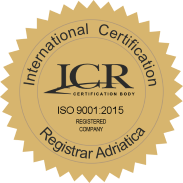- Tometići 38/2, 51215 Kastav
- info@adeptio.hr
- +385 51 833 573
- You are in
- References
- Waste water treatment
Fecal station for buses
The main purpose of this system is to empty the chemical toilets of buses and caravans. The idea for the development of a system like that arose from the need for a proper ecological and hygienic way of disposing wastewater from chemical toilets. While in Europe this way of emptying chemical toilets has long been present and accepted, in our country this is unfortunately not the case yet. Bus and caravan drivers were then forced to solve this problem in various ways, which was personally confirmed by the responsible persons from the Municipal Service in Rovinj. On their initiative we started designing a system that would solve the problem. The biggest feature of this system is that it is automated so that it requires a minimum of user activity during the discharge process. In addition to the service of emptying chemical toilets, the system also provides the possibility of purchasing a certain amount of drinking water for various needs of buses, caravans and other users.
Block diagram and description of the system
1. A receiving chamber built into the concrete through which the contents of the toilet are emptied into a septic tank provided for that purpose.
The receiving part is equipped with a sliding shutter made of stainless steel. The shutter is opened and closed by a linear actuator and the condition is monitored with inductive detectors (open-closed-error). In the part where the actuator is installed, there is also a heater with a thermostat and a solenoid valve for automatic rinsing of the chamber after emptying. It closes with a stainless steel lid equipped with an airtight seal to allow easy access for service. It is emptied through a siphon, so that there is always a water barrier at the bottom and thus prevents the penetration of unpleasant odors from the septic tank.
2. Stainless steel cabinet with built-in automation to control the complete system
Automation of chamber monitoring and control is performed via the SIEMENS PLC and a text display that serves to visualize the status, alarms and possible parameter settings by the user. The alarm is displayed locally and on the PC in the toll booth. It contains a photo cell that has a safety role, ie it serves to detect the presence of vehicles in the system and as long as it is present it does not allow the entry barrier to be raised. It also contains a station for automatic water dispensing. If the correct bill with a bar code for a certain amount of water is loaded, by pressing the illuminated button, the user confirms that he is ready to receive water and thus begins the cycle of draining water.
3. Mobile barrier: Restricted access
It is lowered automatically if the correct invoice for the purchase of the toilet flushing service is "loaded" on the bar code detector at the entrance to the system, and it is raised when the vehicle leaves the system
4. Stainless steel column with built-in BAR code detector
It is used to load invoices with a bar code and if the invoice is correct, it allows further use of the service
5. Conductive probe for high septic tank detection
It is used to report a high level alarm in the septic tank, which is displayed locally on the cabinet and on the PC in the toll booth.
6. Charging and monitoring system of the station
The PC cash register is located in the toll booth of the parking lot, and in addition to the classic PC configuration, it also contains a printer for printing invoices with a bar code. The PC is connected to the PLC via a media converter and an optical cable. The bar code reader is connected to the PLC, and if the correct invoice is loaded on it, the execution of the purchased service begins. The services that can be purchased are: the service of emptying the fecal tank, and selling a certain amount of drinking water
This website uses cookies to provide a better user experience and functionality. Find out more


